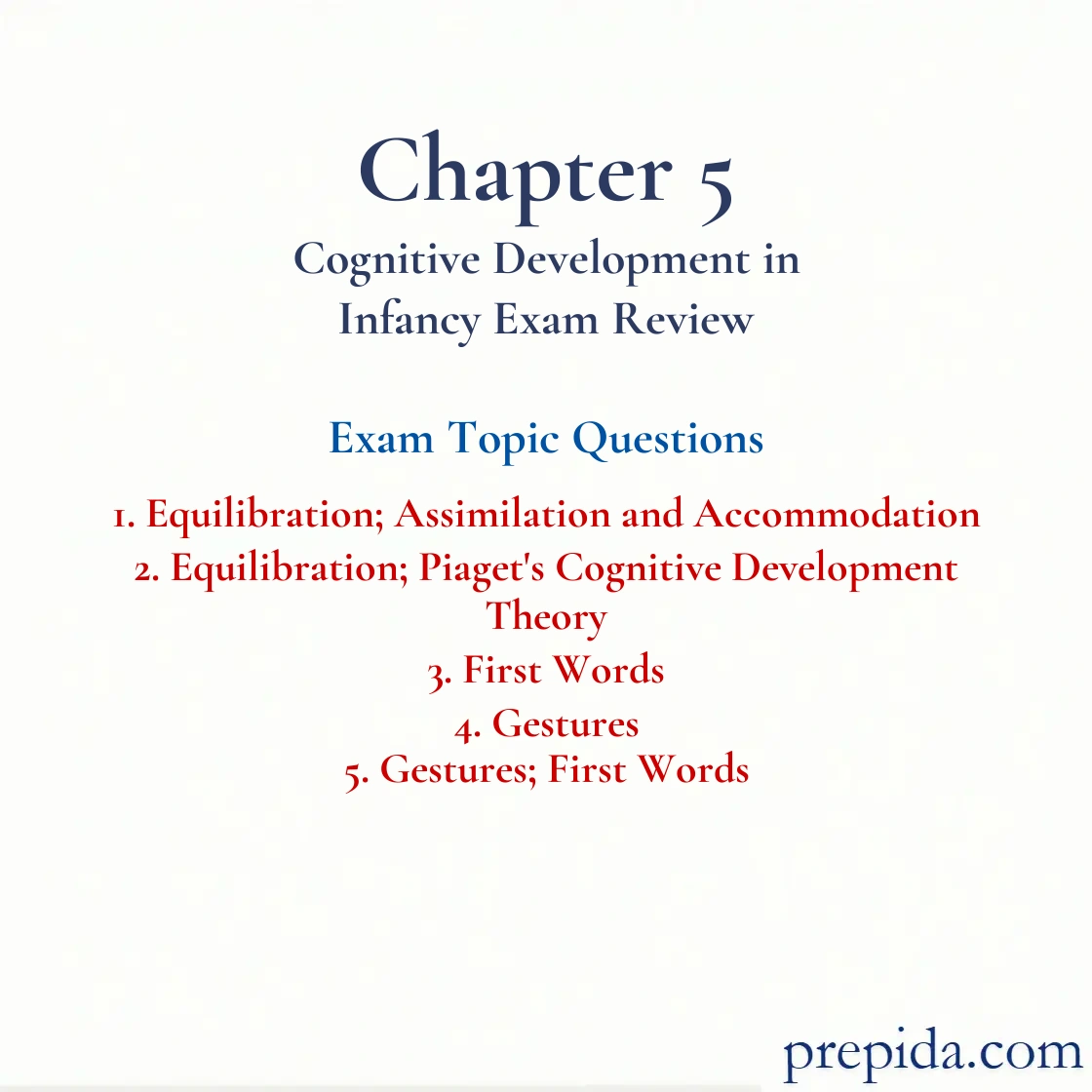
For cognitive change to occur, identify the two processes that must work in concert as a child experiences considerable movement between the states of cognitive equilibrium and disequilibrium.
- equilibration and categorization
- amalgamation and organization
- assimilation and accommodation
- classification and modification
Accommodation: Piagetian concept of adjusting schemes to fit new information and experiences.
Trenton was playing in a sandbox. He was pouring sand from a short and wide container into a tall and narrow container. When he poured the sand into the tall and narrow container, it appeared as if it had more sand in it. Trenton could not figure out where the extra sand came from and how it got into his container. As Trenton continued to try to solve this puzzle, he experienced considerable movement between states of cognitive ________ and ________ to produce cognitive change.
- equilibrium; disequilibrium
- adaptation; organization
- classification; modification
- equilibration; categorization
Equilibration: A mechanism that Piaget proposed to explain how children shift from one stage of thought to the next.
Jean Piaget believed that cognition in one stage is ________ that in another stage.
- qualitatively different from
- quantitatively different from
- qualitatively similar to
- quantitatively similar to
When children experience cognitive conflict in trying to understand the world, they shift from one stage of thought to the next. The mechanism through which this shift occurs is called
- equilibration.
- assimilation.
- organization.
- amalgamation.
Equilibration: A mechanism that Piaget proposed to explain how children shift from one stage of thought to the next.
The rapid increase in an infant's vocabulary starting at about 18 months of age is called
- the secular trend.
- telegraphic speech.
- the vocabulary spurt.
- phonetic advancement.
Language: A form of communication, whether spoken, written, or signed, that is based on a system of symbols. Language consists of the words used by a community and the rules for varying and combining them.
Two-year-old Max sees a rabbit and calls it a "bunny." He then sees a large white hamster and calls it a "bunny," too. In this scenario, the application of a word to objects that are inappropriate for the word's meaning is referred to as
- deferred imitation.
- underextension.
- infantile amnesia.
- overextension.
Kyoko is 13 months old and can understand about 50 words but can say only about 10 words. This demonstrates how Kyoko's ________ vocabulary is more developed than her ________ vocabulary.
- expressive; spoken
- spoken; receptive
- receptive; spoken
- spoken; expressive
Language Acquisition Device (LAD): Chomsky’s term that describes a biological endowment enabling the child to detect the features and rules of language, including phonology, syntax, and semantics.
Two-year-old Sarai uses the word "doll" to refer to her own Cabbage Patch doll but does not use the word to refer to her sister's Barbie doll. Sarai's error is known as
- underextension.
- telegraphic speech.
- private speech.
- overextension.
Assimilation: Piagetian concept of using existing schemes to deal with new information or experiences.
Identify a true statement about gestures in infant language development.
- Infants start using gestures, such as showing and pointing, at about 4 to 5 months of age.
- Use of the pointing gesture becomes effective in the third year of life.
- Use of the pointing gesture hinders infants' language development.
- Some early gestures are symbolic, as when an infant smacks his or her lips to indicate food or drink.
Language: A form of communication, whether spoken, written, or signed, that is based on a system of symbols. Language consists of the words used by a community and the rules for varying and combining them.
Eleven-month-old Maya points to her cup when she wants some water to drink. Maya's behavior
- is considered slow for her age; she should be using simple words by this time.
- is considered appropriate for her age.
- is considered advanced for her age; most children do not point until after 12 months.
- should be discouraged so that she will learn to speak.
Ageism: Prejudice against others because of their age, especially prejudice against older adults.
Which of the following indicates a significant problem in an infant's communication system?
- a lack of pointing by 15 months of age
- not being able to speak 50 words by 15 months of age
- only speaking 150 words by two years of age
- a lack of pointing by seven months of age
Sensorimotor Stage: The first of Piaget’s stages, which lasts from birth to about 2 years of age; infants construct an understanding of the world by coordinating sensory experiences with motoric actions.